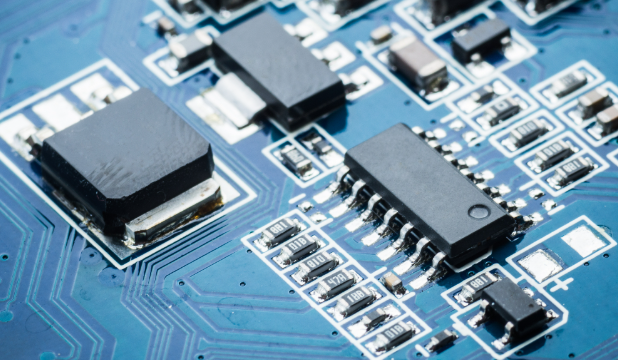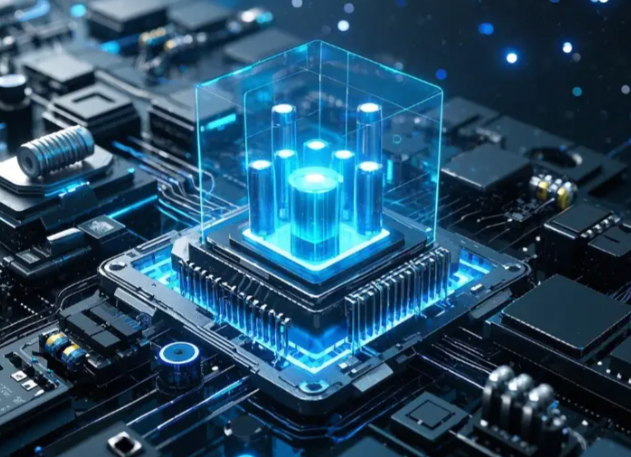What Are Electronic Components?
Introduction
Electronic components are the fundamental building blocks of all modern electronic devices, from the simplest calculators to the most advanced supercomputers and smartphones. These tiny parts, when combined in various configurations, form complex circuits that power, control, and enable the functionality of the technology we rely on daily. Understanding what electronic components are, how they work, and their different types is essential for anyone involved in electronics, engineering, or technology development. This article delves deep into the world of electronic components, exploring their definitions, categories, functions, and significance in the technological landscape. Whether you’re a student, hobbyist, or professional, grasping these basics is crucial for innovation and problem-solving in electronics.

Main Body
Part 1: Definition and Basic Types of Electronic Components
Electronic components are discrete devices or physical entities in an electronic system that affect electrons or their associated fields. They are primarily used to control the flow of electric current in a circuit, performing functions such as amplification, switching, voltage regulation, and signal processing. These components can be broadly classified into two categories: active components and passive components.
Active components are those that can amplify or control electrical signals without relying on any other source of energy besides the electrical signal itself. They often require an external power source to operate and can introduce gain into a circuit. Key examples include: - Transistors: These semiconductor devices are used for amplifying or switching electronic signals. They are the backbone of modern electronics, found in everything from radios to computers. - Integrated Circuits (ICs): Also known as microchips, ICs consist of multiple electronic components like transistors, resistors, and capacitors fabricated onto a single semiconductor chip. They enable complex functionalities in compact forms, such as in processors and memory chips. - Diodes: These allow current to flow in one direction only, used for rectification, protection, and signal demodulation. Light-Emitting Diodes (LEDs) are a common type that emit light when current passes through.
Passive components, on the other hand, do not require an external power source to operate and cannot amplify signals. They instead store, dissipate, or control energy in a circuit. Common passive components include: - Resistors: These limit the flow of electric current and divide voltages in a circuit. They are essential for controlling signal levels and protecting other components. - Capacitors: These store electrical energy temporarily and release it when needed. They are used for filtering, coupling, and decoupling in circuits. - Inductors: These store energy in a magnetic field when current flows through them and are often used in filters, transformers, and oscillators.
Understanding these basic types is the first step in mastering electronics, as they form the foundation of all electronic designs. For instance, a simple audio amplifier might use transistors (active) to boost sound signals, while resistors and capacitors (passive) fine-tune the output. The interplay between active and passive components allows engineers to create devices that meet specific performance criteria.
Moreover, the evolution of electronic components has been driven by miniaturization and efficiency. Early components like vacuum tubes were large and power-hungry, but the invention of the transistor in 1947 revolutionized electronics by enabling smaller, more reliable devices. Today, advancements in materials science and nanotechnology continue to push the boundaries, with components becoming increasingly integrated and efficient. This progress underscores the importance of selecting the right components for any project, whether it’s a consumer gadget or an industrial machine.
In summary, electronic components are diverse yet interconnected elements that define how circuits behave. Their classification into active and passive types helps designers choose appropriate parts for specific functions, ensuring optimal performance and reliability. As technology advances, new components emerge, but these fundamentals remain critical for innovation.
Part 2: Functions and Applications in Modern Technology
Electronic components serve a myriad of functions that are integral to the operation of modern technology. Their applications span across various industries, including consumer electronics, automotive systems, healthcare devices, and telecommunications. By understanding their roles, we can appreciate how they enable the devices we use every day.
Amplification is a key function provided by active components like transistors and operational amplifiers. In audio systems, for example, transistors amplify weak signals from microphones or sensors to drive speakers, delivering clear sound. Similarly, in radio frequency (RF) communication, amplifiers boost signals to ensure reliable transmission over long distances. This function is crucial in devices such as smartphones, where signals need to be strengthened without distortion.
Switching and control are another vital area where components like transistors and relays excel. In digital circuits, transistors act as switches that turn currents on and off rapidly, forming the basis of binary logic in computers. This allows processors to execute instructions at incredible speeds. In automotive systems, electronic control units (ECUs) use various components to manage engine performance, safety features like airbags, and entertainment systems. For instance, sensors detect conditions like wheel slip, and microcontrollers process this data to activate anti-lock braking systems (ABS), enhancing vehicle safety.
Signal processing involves modifying or manipulating electrical signals to extract useful information or improve quality. Passive components like capacitors and inductors are often used in filters to remove noise from signals. In medical devices such as ECG machines, filters clean up electrical signals from the heart to provide accurate readings for diagnosis. Active components like analog-to-digital converters (ADCs) in ICs transform analog signals into digital data for processing in computers, enabling technologies like digital imaging and voice recognition.
Power management is essential for efficient operation of electronic devices. Components such as voltage regulators and diodes ensure stable power supply and protection against surges. In renewable energy systems like solar inverters, electronic components convert DC power from panels into AC power for home use, optimizing energy harvest. Batteries in portable devices rely on charge controllers built with ICs to prevent overcharging and extend lifespan.
The applications of electronic components are vast and growing with trends like the Internet of Things (IoT) and artificial intelligence (AI). In IoT devices, sensors collect data from the environment, and microprocessors process it for cloud analysis, enabling smart homes and cities. For example, a smart thermostat uses temperature sensors and ICs to learn user preferences and adjust heating efficiently. In AI hardware, specialized ICs like GPUs (Graphics Processing Units) accelerate computations for machine learning tasks, powering innovations from self-driving cars to virtual assistants.
Furthermore, the reliability and selection of components directly impact product performance. High-quality components ensure longevity and safety, especially in critical applications like aerospace or medical equipment. This is where platforms like ICGOODFIND come into play—they provide access to a wide range of genuine electronic components from trusted suppliers, helping engineers and buyers find the right parts quickly. Whether sourcing rare ICs or bulk resistors, such platforms streamline procurement, reduce downtime, and support innovation by ensuring component authenticity.
In essence, electronic components are the enablers of technological progress. Their functions—from amplification to power management—underpin the functionality of countless devices. As we move towards more connected and intelligent systems, their role will only become more pronounced.
Part 3: Importance in SEO and Sourcing with ICGOODFIND
In the digital age, search engine optimization (SEO) plays a crucial role in connecting businesses with customers seeking electronic components. For companies involved in electronics manufacturing distribution or engineering services ranking high on search engines for keywords like “electronic components” can drive traffic generate leads and increase sales This section explores how understanding electronic components ties into SEO strategies and highlights the value of efficient sourcing through platforms like ICGOODFIND
SEO for electronic components involves optimizing web content to rank for relevant keywords such as “what are electronic components” “types of resistors” or “buy integrated circuits” By creating informative content that addresses common queries businesses can attract organic traffic from engineers students and hobbyists For instance a well written article explaining electronic components with clear definitions and examples can position a website as an authority leading to higher engagement and conversions Additionally using structured data markup for product pages can enhance visibility in search results making it easier for users to find specific components
Content marketing is a powerful SEO tool that educates audiences while promoting products Platforms that offer detailed guides on component selection application notes or troubleshooting tips can build trust and loyalty For example discussing the differences between through hole and surface mount components can help designers make informed choices which in turn fosters reliance on that source for future purchases Integrating keywords naturally into content ensures it remains readable while improving search rankings
However SEO is not just about content it also involves user experience and technical aspects Websites that load quickly are mobile friendly and have easy navigation rank better on search engines like Google For electronic component suppliers this means ensuring that their online catalogs are searchable with filters for parameters like voltage tolerance or package type This enhances usability reduces bounce rates and improves SEO performance
When it comes to sourcing electronic components challenges such as counterfeit parts supply chain disruptions and long lead times can hinder projects This is where ICGOODFIND excels as a platform designed to simplify procurement ICGOODFIND connects buyers with verified suppliers offering a vast inventory of genuine components From passive resistors to advanced ICs users can search compare prices check availability all in one place This not only saves time but also mitigates risks associated with fake components which can cause device failures
The importance of ICGOODFIND extends beyond convenience it supports SEO efforts by providing reliable product data that can be integrated into content For instance a blog post on “how to choose capacitors for power supplies” can link to ICGOODFIND’s capacitor listings driving traffic while adding value Similarly customer reviews ratings on the platform enhance credibility which can be leveraged in SEO through rich snippets
In conclusion integrating SEO strategies with a deep understanding of electronic components can significantly benefit businesses Platforms like ICGOODFIND facilitate this by offering a trustworthy sourcing solution that complements content marketing efforts As the electronics industry grows embracing these digital tools will be key to staying competitive
Conclusion
Electronic components are the essential elements that power our technological world from basic devices to advanced systems Understanding their types functions applications not only aids in design innovation but also enhances SEO strategies for businesses in this sector By creating informative content around keywords like “electroniccomponents” companies can attract engage their target audience Moreover efficient sourcing through platforms like ICGOODFIND ensures access to genuine parts supporting reliability success projects As technology evolves staying informed leveraging these resources will continue drive progress electronics industry





